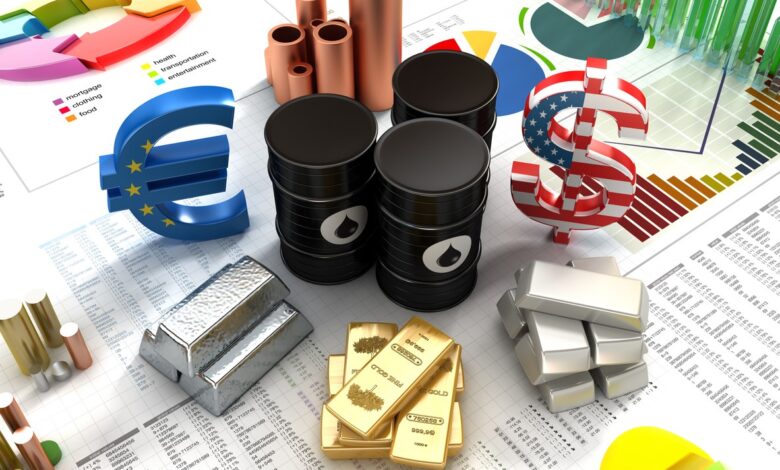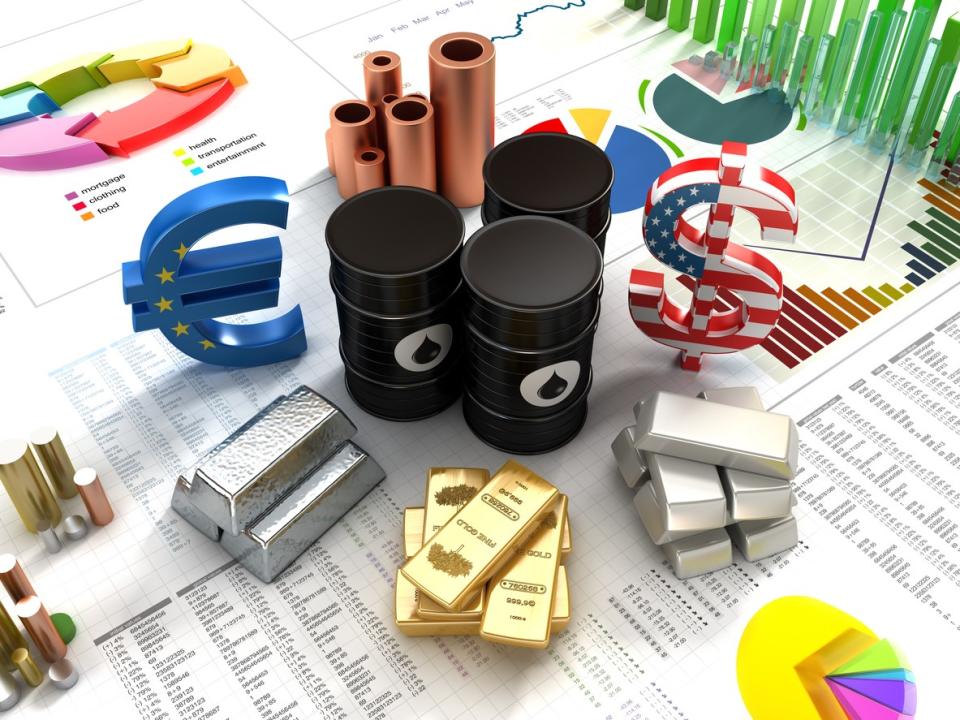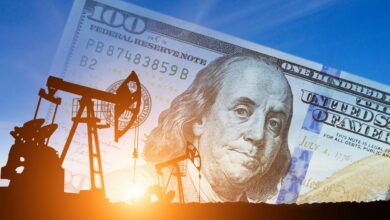10 Best Commodity ETFs for 2024 Inflation


Inflation is back and so are commodities. Almost every commodity group, including oil and gas, precious metals, and agriculture are outperforming the S&P 500 index in 2024.
Exchange-traded funds offer investors exposure to commodities without having to take physical possession of the underlying asset. So, if investors want a convenient means of tracking the price of a commodity like oil or gold, they can buy an ETF that tracks the prices of those assets, or they may also buy commodity ETFs that offer broad market exposure across multiple commodities.
We take a fresh look at inflation in 2024, as well as the top commodities ETFs for inflation.
What Is a Commodity ETF?
A commodity ETF is a type of exchange-traded fund that provides exposure to one or more commodities, which are raw materials or primary agricultural products that can be bought and sold. These ETFs allow investors to gain exposure to the price movements of commodities without having to own the physical assets themselves.
Commodity ETFs can track the price of individual commodities or a basket of commodities, offering diversification and potentially serving as a hedge against inflation or currency fluctuations. ETFs may track the price of commodities, such as oil, gold or silver, by holding the physical commodities directly.
Alternatively, these ETFs may track a commodity benchmark asset’s price indirectly by using derivatives, such as futures or options contracts. Some commodity ETFs are equity-based, which means they invest in companies involved in natural resources or the mining industry.
Do Commodity ETFs Hedge Against Inflation?
Commodity ETFs are often considered by some investors as a potential hedge against inflation, but the effectiveness of this hedge can vary depending on several factors. While commodities have historically exhibited a positive correlation with inflation, there are nuances to consider.
Here’s what to know about commodity ETFs and inflation:
-
Historical inflation hedge: Inflation is characterized by a general rise in prices for goods and services over time. Commodity prices, such as those of energy, metals and agricultural products, often rise during periods of inflation. For example, in the most recent two-year period where inflation was rising dramatically, broad basket commodity ETFs rose in price more than 60%.
-
Supply and demand dynamics: Commodities are subject to supply and demand forces that can influence their prices. During times of high inflation, demand for commodities might increase and lead to higher production costs, increased infrastructure spending and other factors, potentially leading to higher prices.
-
Different commodities: Not all commodities respond equally to inflation. Some commodities, such as agricultural products, might be more directly influenced by inflation, while others, like precious metals, can also be affected by factors like currency movements, safe-haven demand and central bank policies.
-
Timing and duration: The effectiveness of commodity ETFs as an inflation hedge can depend on the timing and duration of inflationary periods. If inflation is short-lived or commodity prices are influenced by other factors, the correlation may not hold as expected.
-
Risks and volatility: Commodity markets can be highly volatile, and investing in commodity ETFs comes with its own set of risks. Price volatility, changes in market sentiment and external factors can impact the performance of these ETFs.
Inflation Outlook for 2024
As of March 20, the Federal Reserve’s 2024 forecast for inflation was 2.4% with its first interest rate projected for June, but after the March Consumer Price Index (CPI) report delivered a third consecutive month of rising inflation, the bond market began pricing in inflation and rates to remain higher for longer.
The CME Fed Watch tool is predicting the first rate cut to come in September.
-
Oil: The outlook for oil is uncertain. While OPEC+ production cuts could offer some support to prices, keeping them around $80 per barrel, a slowdown in global economic growth and potential increases in non-OPEC supply could put downward pressure on prices.
-
Gold: Gold is expected to remain a strong performer in 2024, potentially reaching new highs. This is because gold is seen as a safe haven asset during times of turmoil, and ongoing geopolitical tensions or economic wobbles could drive up demand. If major central banks start cutting interest rates in 2024, as some predict, it could weaken the US dollar and make gold more attractive.
-
Other commodities: The outlook for other commodities is varied. Base metals like copper could see some price increases due to rising demand in sectors like electric vehicles, but overall performance depends on global economic health. Agriculture ETFs have outperformed the S&P 500 in the first four months of 2024, but a slower economy in the second half may push prices back down.
Remember, commodity markets are complex and influenced by numerous factors. These are just general forecasts, and the actual performance of any commodity can deviate from expectations.
Is Stagflation a Looming Threat?
There is no consensus among economists on whether stagflation is a looming threat. Some economists believe that the current economic conditions are not conducive to stagflation, while others believe that the risk of stagflation is increasing. Stagflation is a situation in which the economy is experiencing both high inflation and slow economic growth.
Stagflation can be a difficult situation to deal with, as it can lead to a number of negative consequences, such as rising unemployment, falling wages and a decline in living standards.
How to Hedge Against Stagflation
A diversified investment portfolio can help mitigate the impact of stagflation. A mix of asset classes, including stocks, bonds, commodities and alternative investments, may provide better protection against various economic scenarios. Investments that can help to hedge against stagflation include Treasury inflation-protected securities (TIPS), commodities and real estate.
Other investments that tend to perform relatively well during periods of stagflation include dividend-paying stocks, cash and short-term bonds, and defensive sectors, such as utilities, healthcare and consumer staples.
10 Best Commodity ETFs by 2024 Performance
Data as April 15, 2024. Leveraged funds were not considered for this list of commodity ETFs.
Bottom Line on Best Commodity ETFs for Inflation
While commodities ETFs can potentially serve as a hedge against inflation, they are not a guaranteed solution and come with their own set of risks. Historically, broad market commodities ETFs have been better inflation hedges than funds that invest in a single commodity, such as gold. Before investing in a commodity fund, investors should carefully consider their investment goals, risk tolerance and overall portfolio strategy.





